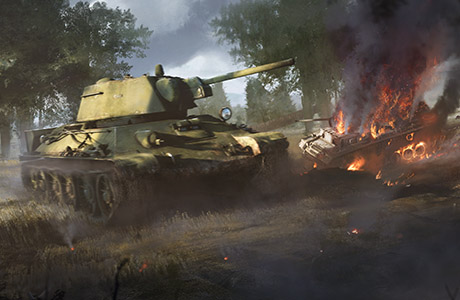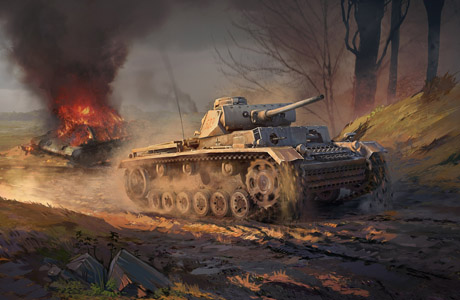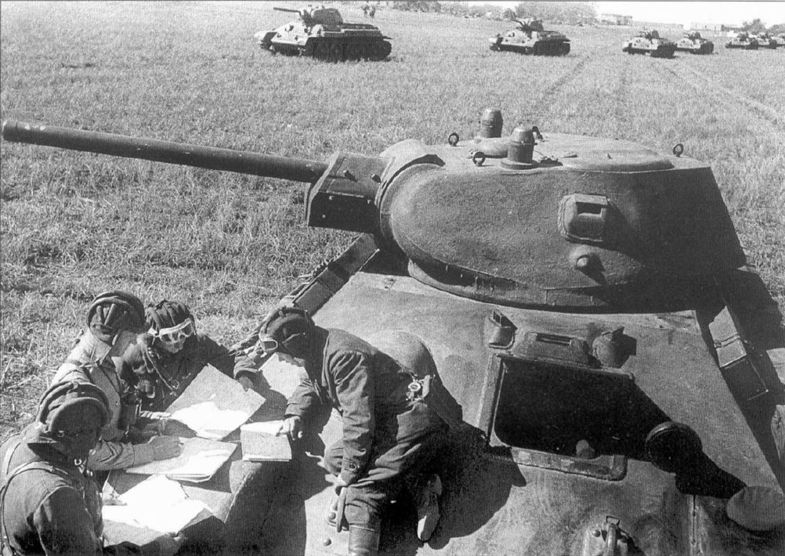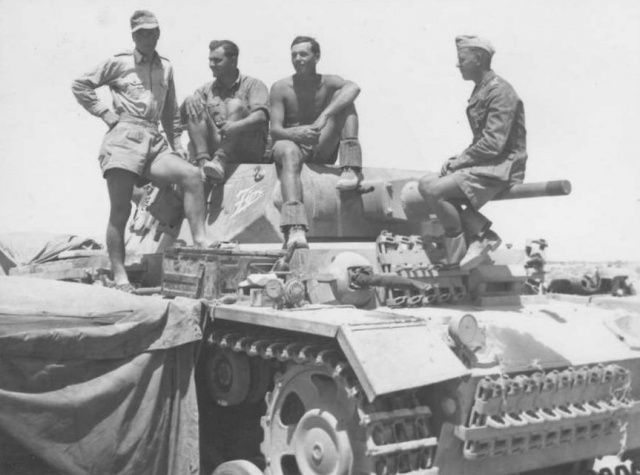
- For PC
- For MAC
- For Linux
- OS: Windows 7 SP1/8/10 (64 bit)
- Processor: Dual-Core 2.2 GHz
- Memory: 4GB
- Video Card: DirectX 10.1 level video card: AMD Radeon 77XX / NVIDIA GeForce GTX 660. The minimum supported resolution for the game is 720p.
- Network: Broadband Internet connection
- Hard Drive: 17 GB
- OS: Windows 10/11 (64 bit)
- Processor: Intel Core i5 or Ryzen 5 3600 and better
- Memory: 16 GB and more
- Video Card: DirectX 11 level video card or higher and drivers: Nvidia GeForce 1060 and higher, Radeon RX 570 and higher
- Network: Broadband Internet connection
- Hard Drive: 95 GB
- OS: Mac OS Big Sur 11.0 or newer
- Processor: Core i5, minimum 2.2GHz (Intel Xeon is not supported)
- Memory: 6 GB
- Video Card: Intel Iris Pro 5200 (Mac), or analog from AMD/Nvidia for Mac. Minimum supported resolution for the game is 720p with Metal support.
- Network: Broadband Internet connection
- Hard Drive: 17 GB
- OS: Mac OS Big Sur 11.0 or newer
- Processor: Core i7 (Intel Xeon is not supported)
- Memory: 8 GB
- Video Card: Radeon Vega II or higher with Metal support.
- Network: Broadband Internet connection
- Hard Drive: 95 GB
- OS: Most modern 64bit Linux distributions
- Processor: Dual-Core 2.4 GHz
- Memory: 4 GB
- Video Card: NVIDIA 660 with latest proprietary drivers (not older than 6 months) / similar AMD with latest proprietary drivers (not older than 6 months; the minimum supported resolution for the game is 720p) with Vulkan support.
- Network: Broadband Internet connection
- Hard Drive: 17 GB
- OS: Ubuntu 20.04 64bit
- Processor: Intel Core i7
- Memory: 16 GB
- Video Card: NVIDIA 1060 with latest proprietary drivers (not older than 6 months) / similar AMD (Radeon RX 570) with latest proprietary drivers (not older than 6 months) with Vulkan support.
- Network: Broadband Internet connection
- Hard Drive: 95 GB
 |
 |
| 1280x1024 | 1920x1080 | 1280x1024 | 1920x1080 |
From 12.00 GMT on September 12th to 23.59 GMT on September 14th
Earn up to 200.000 for performing these special tasks:
for performing these special tasks:
Destroy 60 player-controlled medium tanks while driving the T-34 1941 or T-34 1942
Destroy 60 player-controlled medium tanks while driving the Pz.Kpfw. III Ausf.L or Pz.Kpfw. III Ausf.M
Discounts in the Game:
30% discount on the purchase of premium account for 15 days or 30 days
25% discount on the purchase of modification "Talisman" for all tanks
Discounts in War Thunder Store:
10% Starter Pack - SdKfz 140/1 and T-26E & Guards Starter Pack
15% Hunter Starter Pack & Shielded KV-1E Starter Pack
20% Heavy Armor Advanced Pack
From 00.01 GMT on September 13th to 23.59 GMT on September 14th
x5 on the first victory with USSR and Germany
T-34
 |
By the end of the late 1930s, the older Soviet light tanks, such as the T-26, BT-2 and BT-7 were slowly starting to show their age. While still fast, the fighting near Lake Chasan in 1938 and near Khalkhin Gol in 1939 showed deficiencies in their design, such as thin armour or the easily combustible petrol engines. Because of this, the Soviet Union was starting to seek a replacement for these armoured vehicles.
Even before clashes between the Red Army and the Imperial Japanese Army in the Far East, work on a new tank began. Lead by engineer Mikhail Koshkin, the design team in the Kharkov Komintern Locomotive Plant began the design process on a tank destined to replace the BT series of tanks. Designated as the A-20, the new prototype incorporated many modern components, such as sloped armour and a V12 diesel engine. After the war with the Japanese, the work was sped up, and a new prototype emerged - designated as the A-32, the new tank was an improvement over the A-20, featuring thicker armour and a more powerful gun - a 76 mm L-11 cannon in place of the earlier 45 mm gun. The new tank impressed the officials, and the order was given to begin production. The first production T-34 tanks rolled off the assembly lines in 1940. During the course of the production, the L-11 gun was found to be inadequate, and was replaced by the 76 mm F-34 model.
After the invasion of the Soviet Union by Germany in June 1941, the tank factories had to quickly be moved behind the Ural Mountains to shield them from German threat. Because of this, production was quickly ceased. However, the already tanks that were already produced quickly found themselves in the thick of the action. The appearance of the new tank shocked the Germans - the sloped 45 mm frontal armour was virtually impenetrable to any German anti-tank gun of the era, save for the 88 mm FlaK 36 anti-aircraft cannon and 105 mm field howitzers. The tank was also robust and easy to operate, which shortened crew training times. However, many tanks were lost due to air attacks and breakdown, as well as poor use in combat by inexperienced crews.
The two most prevalent models of the T-34 in the early years of the Great Patriotic War were the T-34 Mod.41 and the Mod.42. The Model 42 was an overall improvement over the Mod.41 - it had larger fuel tanks, thicker armour (up to 65 mm), bigger ammo stowage capacity and redesigned hatches, which were easier to open in case of emergency. It was powered by the V-2-34 Diesel engine, producing 500 horsepower and enabling it to reach a maximum speed of 53 km/h. The T-34 Mod. 42 proved vital during Operation “Uranus”, which enabled the encirclement of the German 6th Army and the 4th Panzer Army in Stalingrad. Overall, nearly 30.000 of these tanks were built throughout the war.
Panzer III
 |
The Panzer III Ausf. L and Ausf. M were the variants of the popular Panzer III medium tank, whose production started in 1938. The early variants of the Panzer III saw service early in the war, especially during the campaigns in Poland and France. Next to the Panzer IV, the Panzer III was the main medium tank of the Wehrmacht in the early stages of the Second World War. After Operation Barbarossa, however, and encountering of the new T-34 and KV-1 Soviet tanks, the Wehrmacht saw, that the short 37 and 50 mm guns of these tanks were inadequate.
In June 1942, the production of the Ausf.L model began. Aside from a new gun (a 50 mm L/60), it also featured increased armour thickness on the turret front, as well as improved superstructure armour. It was powered by a Maybach HL120 TRM engine producing 296 horsepower, which enabled it to reach a maximum speed of 40 km/h. Produced by companies such as Henschel, Wegmann and Alkett it was sent to units fighting in Russia including the Panzergrenadier Division “Grossdeutschland” as a loss replacement for the earlier Ausf. J models. Overall, 693 of these tanks were produced.
The upgraded Ausf.M model also featured improved fording equipment. Many of these tanks were fitted with Schürzen armoured plates, designed to protect the sides of the tank from antitank rifle fire. 250 of these tanks were produced between October 1942 and February 1943. They were mainly issued to Army Group “Centre” units in Russia, as well as the “Hermann Göring” Airborne Panzer Division and the 15th Panzergrenadier Division in Sicily.
The Panzer III Ausf. L and M variants took active part in the fighting on the Eastern Front and in Italy. Even though the L/60 gun was an improvement over the earlier 37 mm and 50 mm cannons, it still was sometimes not enough when faced with the upgraded T-34 models. The Panzer III was relegated out of frontline service after the introduction of upgraded Panzer IV models as well as the new Panzerkampfwagen V “Panther” medium tank. The chassis of the Panzer III was, however, successfully used as a basis for the Sturmgeschütz III assault gun.
The War Thunder Team



